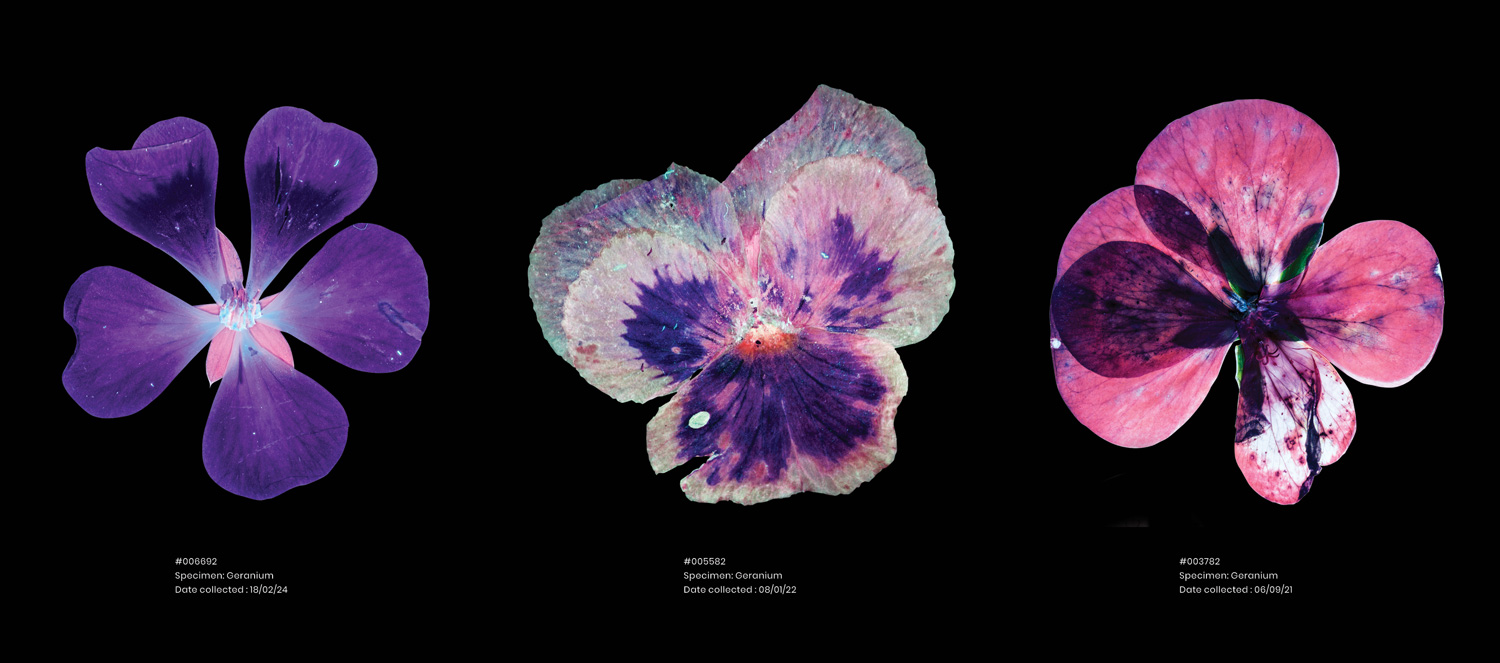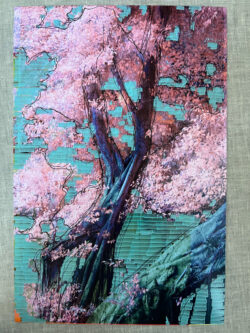In the magical order of the natural world, flowers have developed numerous traits to attract insects and guarantee their propagation. One such method involves the presence of hidden ultraviolet markings on the petals, which guide insects directly to their nectar. It’s a symbiotic exchange of life: nectar for the bee, pollination for the flower.
These patterns are invisible to the human eye which contains protective lens to filter out UV wavelengths. However, to bees, butterflies, and a number of other insects, these flowers reveal beautiful inner characteristics.
While it is widely believed that humans cannot see ultraviolet light, there is speculation that the painter Claude Monet was able to perceive colours beyond the violet (ultraviolet) spectrum after undergoing an operation to remove his cataracts in the early 20th century. Evidence suggests a notable shift in the colour palette of his works during this era, leaning towards blues and purples. Art historians and speculators propose that these post-surgery paintings reflect his attempt to express his newfound sight, likely containing colours most humans cannot see. It’s an intriguing concept that highlights both the hidden beauties around us and the inherent subjectivity of colour perception. How was Monet to know if the colours he could see were any different from those perceived by others?

Photoseries
This series presents a collection of flowers (Geranium, Pansy, Nasturtium, Marigold, Azalea) gathered from my garden and surrounding areas in the North of Sydney.
They underwent a process of air drying and book pressing for 2-4 weeks. This traditional method of preserving flowers beyond their natural existence, also creates an interesting abstraction by compressing their spatial volume from 3D to 2D.
Once dried and pressed, the flowers were photographed using a specialised camera and ultraviolet light. The resulting images unveil a hidden X-ray-like beauty, showcasing a unique combination of ultraviolet (320-380nm), ultraviolet-induced visible fluorescence (UVIVF), and visible light.
A fusion of floral preservation and photographic exploration, aiming to reveal hidden and unexpected beauty.




More


 Freshly picked Geranium before book pressing - Ultraviolet induced fluorescence / Visible light
Freshly picked Geranium before book pressing - Ultraviolet induced fluorescence / Visible light ‘In Bloom’ Exhibition



 Geranium #003782, Pansey #003977, Geranium #003780
Geranium #003782, Pansey #003977, Geranium #003780  'In Bloom' Group exhibition : March 14- April 8
'In Bloom' Group exhibition : March 14- April 8 Monet Lamp

















